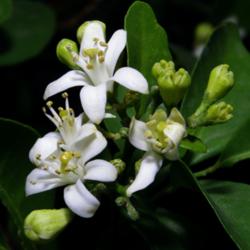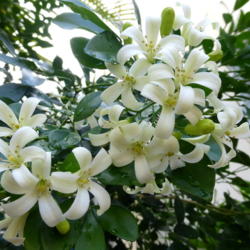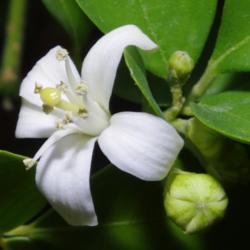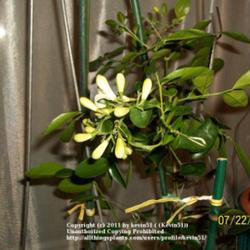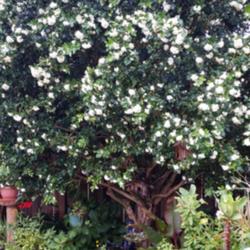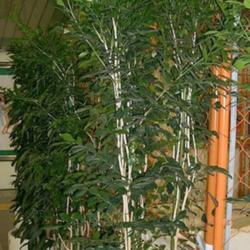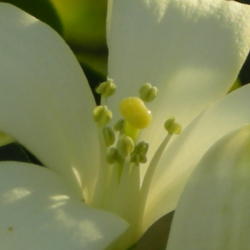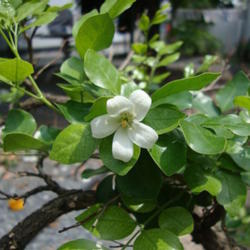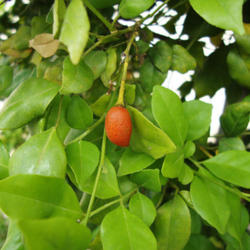| Plant Habit: | Shrub Tree |
| Life cycle: | Perennial |
| Sun Requirements: | Full Sun to Partial Shade Partial or Dappled Shade |
| Water Preferences: | Mesic |
| Soil pH Preferences: | Slightly acid (6.1 – 6.5) Neutral (6.6 – 7.3) Slightly alkaline (7.4 – 7.8) |
| Minimum cold hardiness: | Zone 9b -3.9 °C (25 °F) to -1.1 °C (30 °F) |
| Maximum recommended zone: | Zone 11 |
| Plant Height: | 8 to 15 feet |
| Plant Spread: | 6 to 12 feet |
| Leaves: | Evergreen Broadleaf |
| Fruit: | Showy Edible to birds Other: 1/2 inch ovoid, red berry containing 1 to 2 hairy seeds |
| Fruiting Time: | Year Round |
| Flowers: | Showy Fragrant |
| Flower Color: | White |
| Bloom Size: | Under 1" |
| Flower Time: | Year Round |
| Underground structures: | Taproot |
| Suitable Locations: | Street Tree Patio/Ornamental/Small Tree |
| Uses: | Windbreak or Hedge Medicinal Herb Will Naturalize Useful for timber production |
| Wildlife Attractant: | Bees Birds |
| Resistances: | Humidity tolerant |
| Propagation: Seeds: | Provide light Days to germinate: 1 to 2 months Depth to plant seed: 3/4" with pointed ends arranged horizontally |
| Propagation: Other methods: | Cuttings: Stem |
| Containers: | Suitable in 3 gallon or larger Needs excellent drainage in pots |
